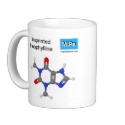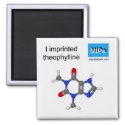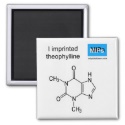|
|
Reference type: Conference Proceeding
Authors: Lee MH, Tsai TC, Huang CY, Liu BD, Lin HY
Publication date: 2011
Article title: Recognition and Electrochemical Sensing of 8-Hydroxydeoxyguanosine with Molecularly Imprinted Poly (ethylene-co-vinyl alcohol) Thin Films.
Page numbers: 331-334
DOI: 10.4028/www.scientific.net/KEM.495.331
Editors: Hristoforou E, Vlachos DS
Publisher: www.scientific.net
Volume number: 495
Conference information: Materials and Applications for Sensors and Transducers
Abstract: Biosensors using the mechanisms of electrochemical, optical, mass sensitive thermometric and magnetometric have been intensively investigated [1], and molecularly imprinted polymers (MIPs) has been used as recognition elements in sensors reviewed in numerous articles [1-3]. A severe challenge for MIP sensors is detection in chemically diverse environments, such as biological fluids [4-7]. There are many biomarkers discovered in biological fluid, like cerebrospinal fluid (CSF), saliva, serum and urine. Important biomarkers such as creatinine [4], urea, and albumin [8], urine contains non-protein nitrogen metabolites, carbohydrates [9], proteins and amino acids [10]; detection of analytes must be made amid this complex chemical background.
Template and target information: 8-Hydroxydeoxyguanosine
Author keywords: 8-Hydroxydeoxyguanosine, molecular imprinting, Poly(ethylene-co-vinyl alcohol), Potentiostat sensors
|


 theophylline template mug ball and stick
theophylline template mug ball and stick







 I imprinted theophylline magnet ball and stick
I imprinted theophylline magnet ball and stick







 I imprinted theophylline magnet
I imprinted theophylline magnet






